As Russia and Ukraine Sign Energy and Black Sea Agreements, 117 Drones Rain Down On Ukrainian Cities While Nuclear Plant Control Remains a Flashpoint
Summary of the Day — March 26, 2025
The elusive promise of a ceasefire crystallized and then immediately fractured across the Ukrainian battlespace as dueling agreements to halt strikes on energy infrastructure and military operations in the Black Sea were met with 117 Russian drones darkening Ukraine’s skies overnight. Despite days of intensive negotiations in Saudi Arabia, Moscow’s conditions for implementing the limited ceasefires—including the lifting of Western sanctions—revealed the wide chasm that still separates the warring parties. Meanwhile, the Kremlin categorically rejected U.S. President Donald Trump’s proposal for American involvement in operating the Russian-occupied Zaporizhzhia Nuclear Power Plant, while French President Emmanuel Macron announced a new €2 billion military aid package for Ukraine during Zelensky’s visit to Paris ahead of a crucial “coalition of the willing” security summit.
A Ceasefire in Name Only: Russia Launches Massive Drone Attack Hours After Agreement
The ink had barely dried on agreements to halt strikes against energy infrastructure when 117 Russian drones carved through Ukrainian airspace overnight on March 26, a stark contradiction to Moscow’s professed desire for peace. Ukrainian air defenses intercepted 56 of the unmanned aerial vehicles—the majority of them Iranian-designed Shaheds—while another 48 disappeared from radar, likely serving as decoys to overwhelm defense systems.
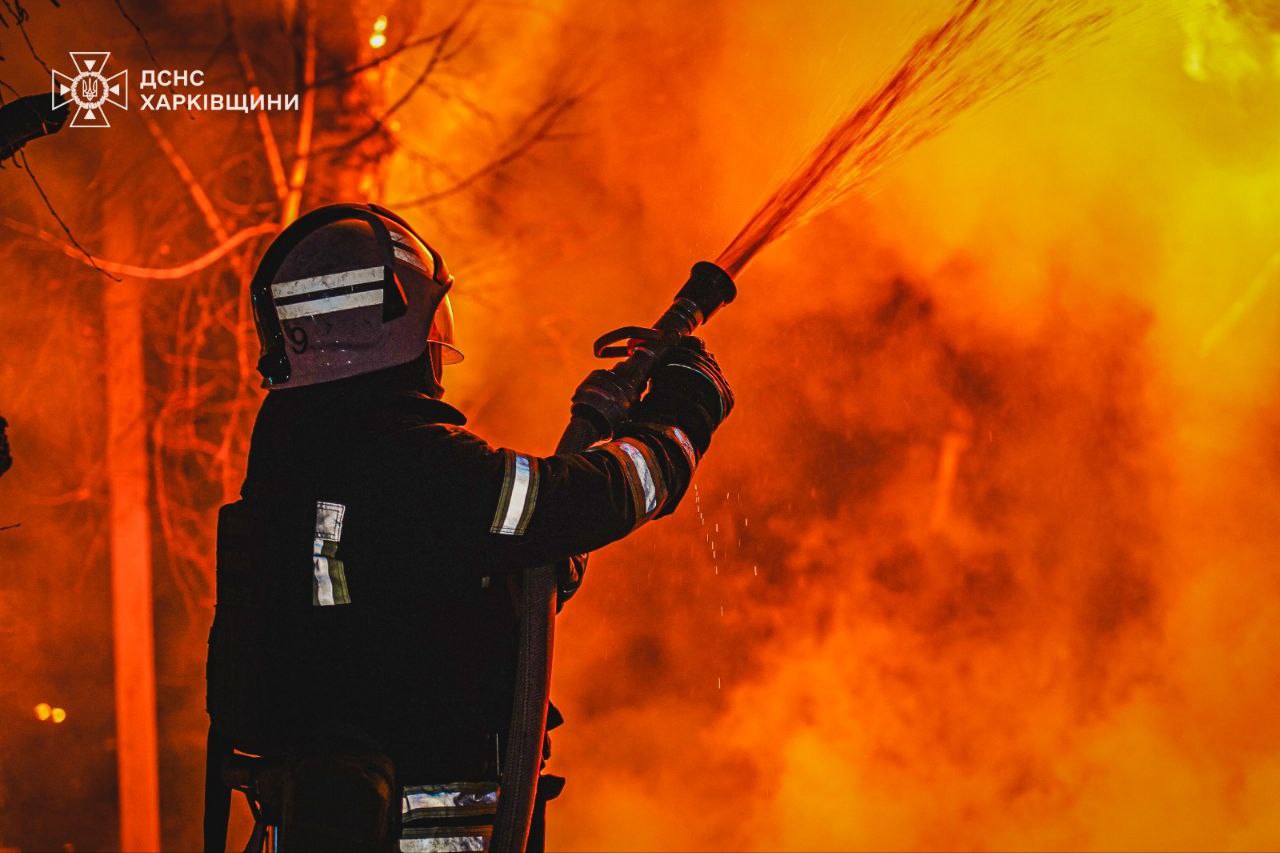 A firefighter works to extinguish a blaze after Russia launched a mass drone strike against the city of Kharkiv on the night. Multiple civilians were injured, including at least three children. (Ukraine’s State Emergency Service / Kharkiv)
A firefighter works to extinguish a blaze after Russia launched a mass drone strike against the city of Kharkiv on the night. Multiple civilians were injured, including at least three children. (Ukraine’s State Emergency Service / Kharkiv)
“Launching such large-scale attacks after ceasefire negotiations is a clear signal to the whole world that Moscow is not going to pursue real peace,” President Volodymyr Zelensky declared on social media, calling for “clear pressure and strong action from the world on Russia.”
Ukrainian officials reported damage in Sumy, Dnipropetrovsk, Kirovohrad, and Cherkasy oblasts. Kryvyi Rih, Zelensky’s hometown, suffered what local authorities called “the most massive kamikaze drone attack” since the start of the full-scale war, with strikes damaging an administrative building, warehouses, a company, and several vehicles.
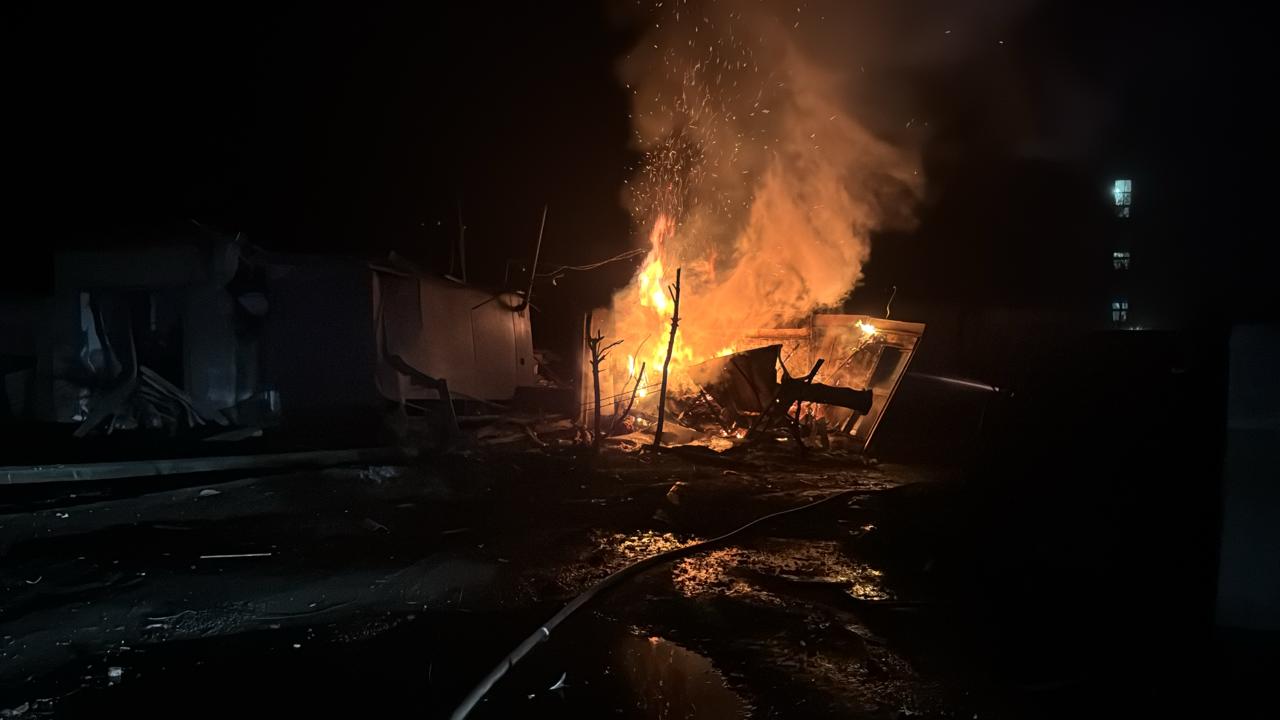 The aftermath of a Russian attack on Ukraine’s Sumy Oblast, publishe. (Sumy Oblast military administration / Telegram)
The aftermath of a Russian attack on Ukraine’s Sumy Oblast, publishe. (Sumy Oblast military administration / Telegram)
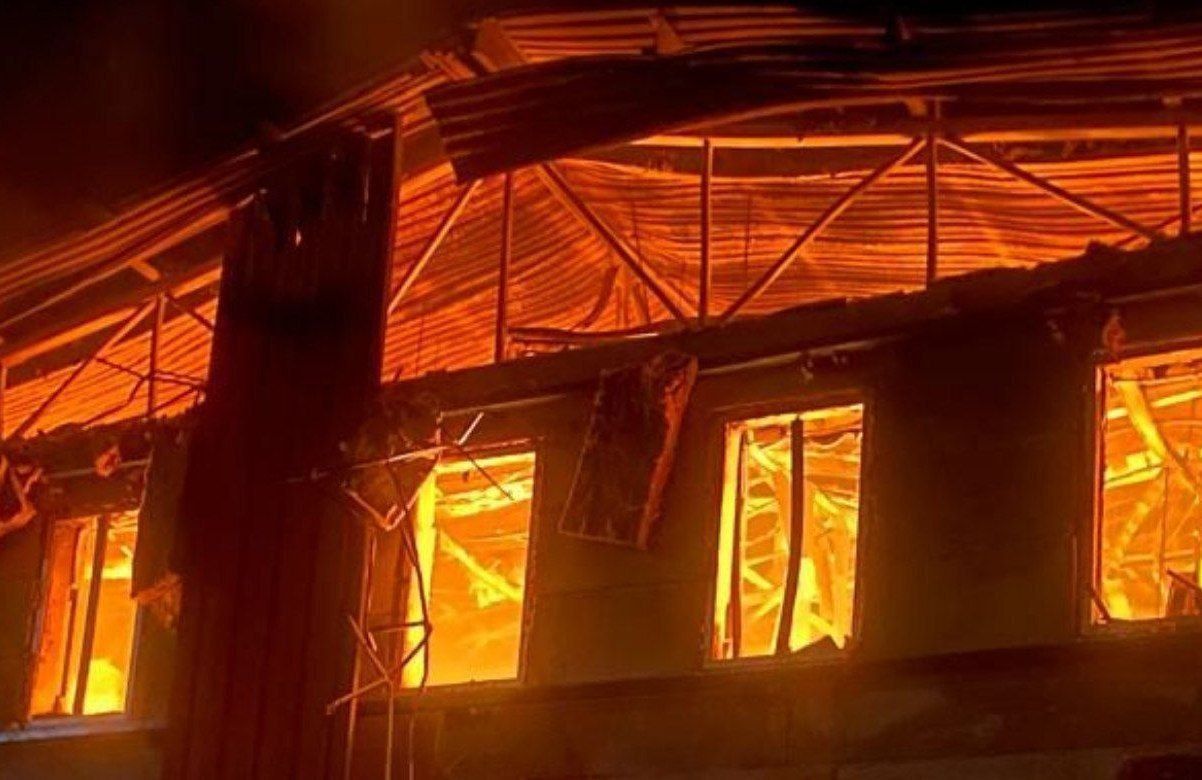 А building on fire following a Russian drone attack against Kryvyi Rih, Dnipropetrovsk Oblast, Ukraine, overnight. (Governor Serhii Lysak/Telegram)
А building on fire following a Russian drone attack against Kryvyi Rih, Dnipropetrovsk Oblast, Ukraine, overnight. (Governor Serhii Lysak/Telegram)
At least four civilians were killed and six injured in Russian attacks across Ukraine over the past day, regional authorities reported.
The Devil in the Details: Confusion Reigns Over Ceasefire Terms
The precise terms of the ceasefires on energy strikes and Black Sea operations remain shrouded in ambiguity, creating fertile ground for mutual accusations and conflicting narratives. Though Russia and Ukraine appear to agree that a ceasefire against strikes on energy infrastructure is active as of March 25, Ukrainian Presidential Office Deputy Head Pavlo Palisa emphasized that Ukraine is still working to develop monitoring mechanisms.
Russian Foreign Ministry spokesperson Dmitry Peskov claimed on March 26 that Russian forces have been implementing Putin’s March 18 order to adhere to the ceasefire on energy infrastructure strikes. Yet presidential advisor Dmytro Lytvyn countered that Russian forces have conducted eight strikes on Ukrainian energy facilities since March 18—a claim that exemplifies the trust deficit between the parties.
The absence of officially published joint texts of the agreements continues to make evaluating the specifics difficult. Ukraine’s list of protected energy facilities, coordinated with the U.S., reportedly differs from what Russia agreed to with Washington. The Ukrainian list encompasses electricity, oil and gas, nuclear and coal industries, and power equipment production, while Russia’s version notably excludes Ukraine’s oil and gas production facilities—key targets of recent Russian attacks.
Sanctions Relief as Precondition: Russia Demands Economic Concessions for Black Sea Ceasefire
Russia has established new conditions for implementing the Black Sea ceasefire, demanding the lifting of Western sanctions on its agricultural sector before honoring its commitments. The Kremlin specifically wants measures lifted against Rosselkhozbank, Russia’s state-owned agricultural bank, and other financial organizations involved in international food and fertilizer trade.
The European Union swiftly responded, with European Commission’s Foreign Affairs Spokesperson Anitta Hipper stating that sanctions would only be amended or lifted if Russia “end[s] its unprovoked aggression in Ukraine” and “unconditionally withdraw[s]” all Russian forces from Ukrainian territory.
“It is not a situation for dialogue when a ceasefire is repeatedly tied to concessions and new demands… we must not be deceived by the Russian president,” German Foreign Minister Annalena Baerbock said, urging Russia to agree to a ceasefire without preconditions.
The U.S., meanwhile, has pledged to “help restore Russia’s access to the world market for agricultural and fertilizer exports, lower maritime insurance costs, and enhance access to ports and payment systems for such transactions.” President Donald Trump acknowledged to reporters that he was “looking at” the possibility of lifting additional sanctions on Russia to secure the ceasefire.
Nuclear Power Standoff: Kremlin Rejects American Control of Zaporizhzhia Plant
Russian officials explicitly rejected U.S. President Donald Trump’s suggestion that the United States could be involved in operating the Russian-occupied Zaporizhzhia Nuclear Power Plant. During a March 19 call with Zelensky, Trump had expressed interest in American control of Europe’s largest nuclear facility, implying Russia would need to cede this strategic territory.
The Russian Ministry of Foreign Affairs responded forcefully, stating that the transfer of the ZNPP’s territory or control to Ukraine or any other country is “impossible” and that joint operation with any nation is “unacceptable.” Deputy Prime Minister Alexander Novak reinforced this position, declaring that Russia is not considering joint operation with the United States.
Moscow attempted to justify its illegal occupation of the ZNPP by referencing Putin’s October 2022 decree that purportedly brought the facility under Russian jurisdiction. The Kremlin routinely portrays itself as the only safe operator of the plant, despite having endangered it since the occupation began in March 2022—storing military equipment near reactors and in turbine halls and using the grounds to launch strike drones.
Paris Pledges: France Commits €2 Billion in Military Aid as Coalition of the Willing Forms
As ceasefire negotiations with Russia faltered, President Emmanuel Macron announced a new €2 billion ($2.1 billion) military aid package for Ukraine during Zelensky’s visit to Paris. The package includes anti-tank missiles, air defense systems, Mirage fighter jet missiles, armored vehicles, ammunition, and support for the production of equipment in Ukraine.
“We must continue to provide immediate support to Ukraine—it is necessary in order to keep up the resistance,” Macron said during a joint press conference.
The announcement came ahead of a critical “coalition of the willing” summit in Paris on March 27, which will bring together Germany, Poland, the UK, and other nations who have pledged to support Ukraine’s post-war security. Over 30 countries have reportedly expressed willingness to contribute to the coalition’s peacekeeping force.
“Our goal is to help Ukraine firstly to hold the situation on the front line, to resist Russian aggression, but at the same time to bring closer the prospects for a lasting peace that we all want to see,” the French president said.
The Baltic Perspective: Cautious Support for Peace Efforts Amid Deep Skepticism
Top diplomats from Estonia, Latvia, and Lithuania expressed cautious support for the Trump administration’s peace efforts while remaining deeply skeptical of Moscow’s intentions. During a meeting with U.S. Secretary of State Marco Rubio at the State Department, they emphasized the need for proper monitoring and verification mechanisms to force the Kremlin to honor agreements.
“We will never agree to forceful change of borders,” Latvia’s Baiba Braze declared, adding that her country would continue supporting “a Ukrainian-led process.”
Estonia’s Margus Tsahkna praised the proposal for a 30-day ceasefire made in Jeddah, saying it clearly demonstrated U.S. and Ukrainian commitment to peace. However, he added, “Russia has shown it is not ready for peace because it is continuing its brutal attacks against Ukraine.”
Lithuania’s Foreign Minister Kęstutis Budrys echoed this sentiment, suggesting the Kremlin had yet to prove its interest in peace. “It’s in our interest to have sustainable peace, not repetition [of hostilities] after a short period,” he said, adding, “we have no illusions about the intentions of Russia.”
Dragging Their Feet?: Trump Questions Russian Commitment to Ending War
In an unexpected admission, President Donald Trump acknowledged that Russia might be deliberately delaying peace efforts. When asked if he believes Russia “wants to see an end” to the full-scale war, Trump told Newsmax, “I don’t know. I mean, I’ll let you know at a certain point. But I think that Russia wants to see an end to it, but it could be they’re dragging their feet.”
Drawing on his own experience as a businessman, Trump continued, “I’ve done it over the years, you know; ‘I don’t want to sign a contract, I want to sort of stay in the game, but maybe I don’t want to do it.'” He added that Zelensky would also “like to see it (the war) end at this point.”
This assessment aligns with reports from the Moscow Times that Russia is deliberately prolonging peace talks to seize more territory and strengthen its negotiating position, believing that time is on its side. A U.S. intelligence assessment similarly concluded that both Moscow and Kyiv may see greater incentive to prolong the war rather than settle for an unfavorable peace deal.
Fighting With Bare Hands: CIA Director’s Stark Assessment of Ukrainian Resolve
CIA Director John Ratcliffe delivered a powerful assessment of Ukraine’s determination, telling a U.S. Senate hearing that Ukrainians “will fight with their bare hands” if they don’t receive conditions acceptable for lasting peace.
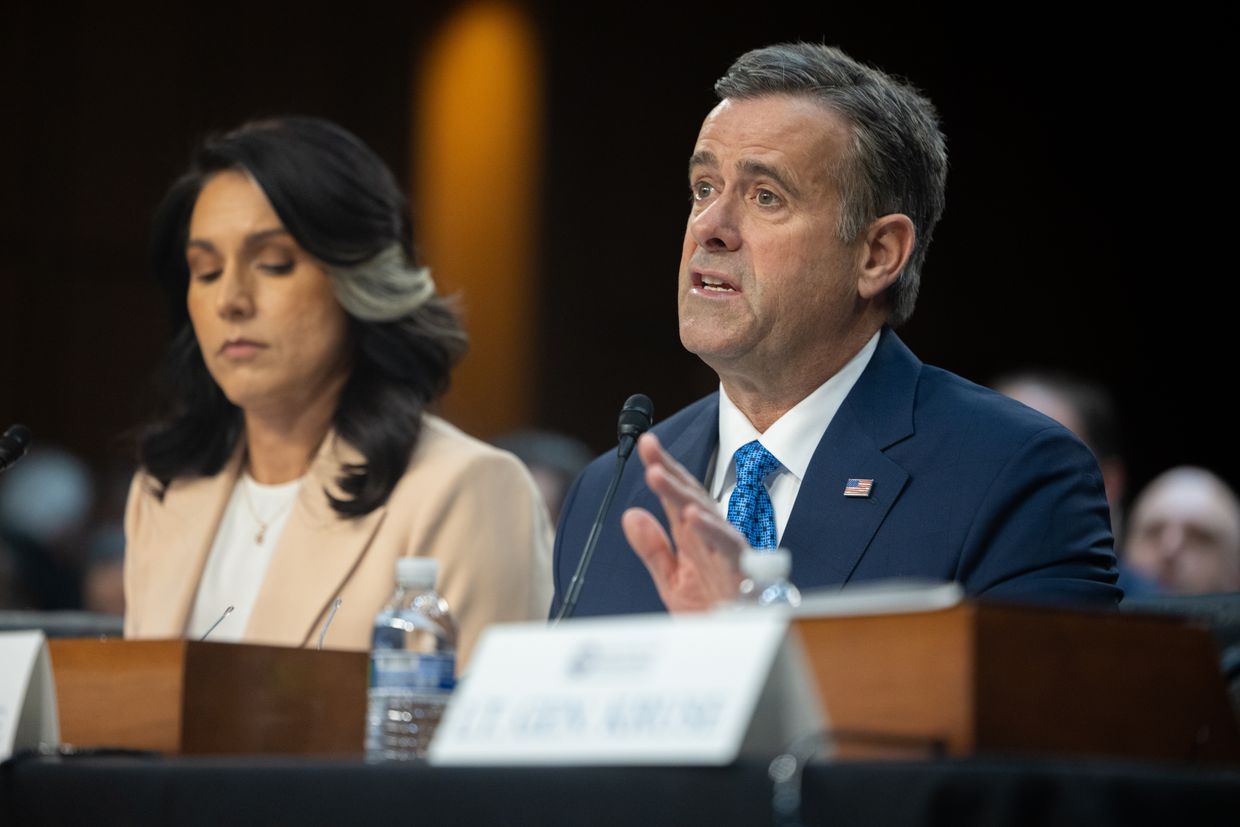 CIA Director John Ratcliffe testifies during a Senate Committee on Intelligence hearing “to examine worldwide threats” in Washington, DC. (Nathan Posner / Anadolu via Getty Images)
CIA Director John Ratcliffe testifies during a Senate Committee on Intelligence hearing “to examine worldwide threats” in Washington, DC. (Nathan Posner / Anadolu via Getty Images)
“I want to say that with regard to the Ukrainian resistance, the Ukrainian people and the Ukrainian military have been underestimated for a period of several years now,” Ratcliffe said. “From my reflections in observing, from an intelligence standpoint, I’m convinced that they will fight with their bare hands if they have to, if they don’t have terms that are acceptable to an enduring peace.”
The statement comes amid Trump’s ongoing efforts to broker a ceasefire and broader peace agreement, with the CIA director emphasizing that Trump seeks an end to the war under conditions that will ensure lasting peace.
When asked directly about this assessment, Ukrainian soldiers across various units affirmed this commitment. One drone operator known by the callsign “Architect” stated: “It is better to end the war, spending a few more years on it, than prolong it for the rest of our lives and the lives of our children.”
Bird of Prey: Ukraine Approves New Domestic Attack Drone System
As diplomatic efforts continue, Ukraine’s Defense Ministry announced the approval of a new domestically produced unmanned aviation system called “Bird of Prey” for combat operations. Developed based on battlefield experience, the system is optimized for strikes against enemy vehicles and fortified positions.
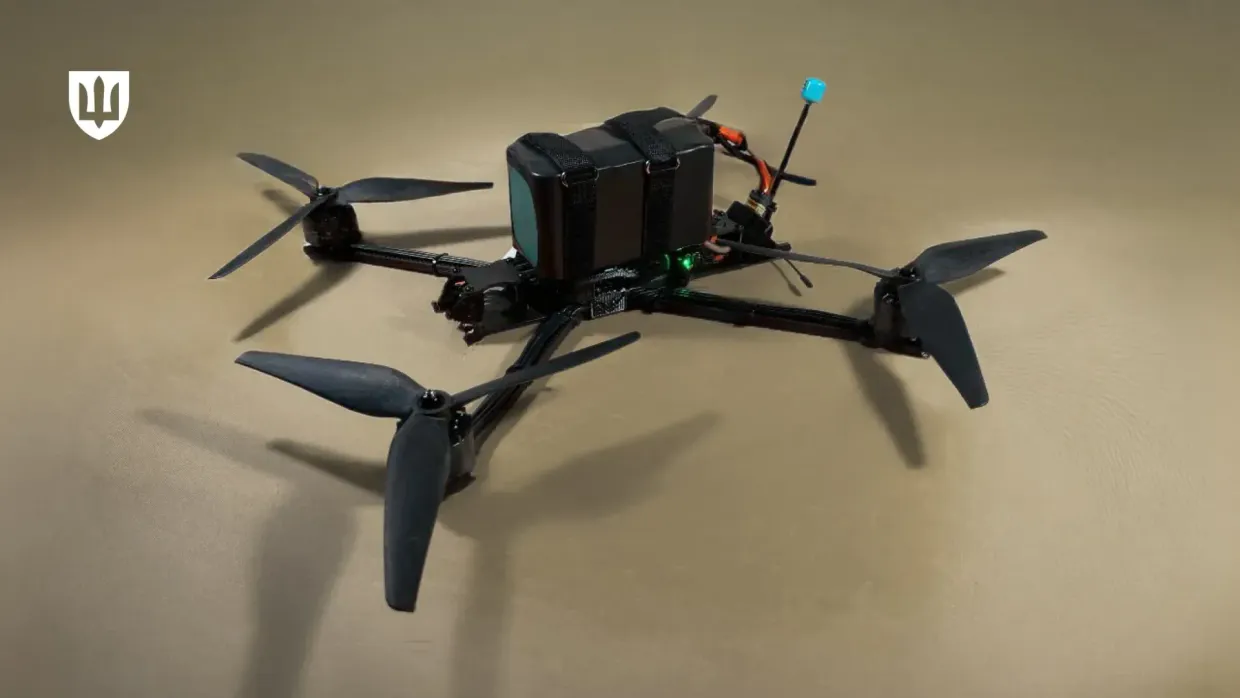 Bird of Prey, Ukraine’s domestically produced unmanned aviation system, in a photo published. (Ukraine’s Defense Ministry / Telegram)
Bird of Prey, Ukraine’s domestically produced unmanned aviation system, in a photo published. (Ukraine’s Defense Ministry / Telegram)
The drones are equipped with payloads capable of striking heavy equipment such as tanks, armored personnel carriers, and self-propelled artillery, as well as fortified dugouts. “The Bird of Prey has already proven its effectiveness in destroying enemy armored vehicles and fortified firing positions,” the ministry stated.
This approval builds on Ukraine’s expanded domestic drone production over the past year, with Kyiv integrating drones into reconnaissance and combat operations. In February, the Defense Ministry launched the “Drone Line” initiative to accelerate battlefield deployment, with President Zelensky setting a target of producing at least 30,000 long-range drones in 2025.
North Korean Reinforcements: Seoul Reports 3,000 Additional Troops Sent to Russia
North Korea has sent an additional 3,000 troops to Russia in 2025 and continues to supply missiles, artillery, and ammunition to aid Moscow’s war effort, South Korea’s military reported. This deployment adds to the estimated 11,000 North Korean soldiers already fighting in Ukraine, 4,000 of whom are believed to have been killed or wounded.
“In addition to manpower, North Korea continues to supply missiles, artillery equipment, and ammunition,” South Korea’s Joint Chiefs of Staff said. “So far, it is assessed that North Korea has provided a significant quantity of short-range ballistic missiles (SRBMs), as well as about 220 units of 170mm self-propelled guns and 240mm multiple rocket launchers.”
The report coincides with news that North Korean leader Kim Jong Un recently oversaw tests of new suicide and reconnaissance drones featuring artificial intelligence technology. KCNA, North Korea’s state news agency, reported that these drones demonstrated capabilities for “tracking and monitoring different strategic targets and enemy troops’ activities on the ground and the sea” and striking capability “to be used for various tactical attack missions.”
Aerial Combat Evolution: Ukrainian F-16 Pilot Reveals Operational Realities
In what was billed as the first-ever interview with a Ukrainian F-16 pilot, Ukraine’s Air Force released insights into the operational realities of the Western-supplied aircraft. The unnamed pilot praised the jets, noting that pilots have experienced no problems receiving real-time intelligence data, contrary to media reports.
“Almost every missile hits its target,” the pilot said. “More than 80 percent of the missiles we launch hit their targets, destroying both Shahed drones and cruise missiles launched from sea, air, and land.”
The pilot explained that F-16 pilots fly multiple ground attack missions each day over Russia and occupied Ukrainian territories while also conducting offensive counter-air missions to protect colleagues operating Soviet-era MiG-29, Su-27, Su-24, and Su-25 aircraft.
However, the pilot admitted one significant limitation: the F-16s cannot get close enough to destroy Russian bombers employing guided aerial munitions from inside Russian airspace. “Our main focus right now is on Russian use of guided aerial bombs. Not all [zones] are fully covered, but we do our best to complete missions in these areas. We understand that we cannot get close enough to destroy the carriers of these bombs.”
Sham Justice: Russia Sentences 23 Azov Defenders to Prison Terms
A Russian military court sentenced 23 Ukrainians who served with the Azov Regiment to prison on charges of “seizure of power” and participating in a “terrorist organization,” Mediazona reported. Eleven were sentenced in absentia as they had been released in prisoner exchanges, while 12 prisoners of war still held in Russia have been jailed for between 13 and 23 years.
Ukraine denounced the trial as a Russian propaganda stunt, noting that international law prohibits such trials with war captives and pledging to bring those sentenced back home.
The ruling concludes the so-called “Case of 24” involving military personnel, cooks, and workers serving with Azov who became Russia’s captives after the Russian siege of Mariupol in 2022. One defendant, 55-year-old driver Oleksandr Ishchenko, died in Russian captivity in July 2024.
Some of those sentenced reportedly complained about torture and poor conditions in detention during their final statements, while others refused to communicate or recognize the Russian court’s authority.
Kidnapped Children: A Russian Plan Predating the Invasion
A disturbing report from the U.S.-based Institute for the Study of War (ISW) claims that Moscow had made plans to relocate and Russify young Ukrainians in occupied territories even before launching its full-scale invasion. The research cites human rights activists who found official documents dated February 18, 2022—just days before the Kremlin’s tanks rolled into Ukraine—that “laid out plans to remove Ukrainian children from orphanages in occupied Luhansk and Donetsk oblasts” under the guise of humanitarian acts.
“These documents revealed that Russia planned to target vulnerable Ukrainian children, especially those without parental care, before the full-scale invasion had even begun,” the ISW states.
The report alleges that Russia’s legal system “made immediate accommodations for the intended influx of stolen Ukrainian children,” including simplifying the process of giving children without parental care Russian citizenship. Yale’s Humanitarian Research Lab has confirmed that Russia is using at least 43 children’s camps to house deported children, at least 32 of which are explicitly “re-education” facilities.
“Russia uses these camps to indoctrinate Ukrainian children, punishing them for their Ukrainian identities and forcibly instilling pro-Russian sentiment through carefully curated Kremlin-approved curricula and ‘military-patriotic’ training courses,” the report continued.
Ukrainian officials have documented around 20,000 cases of children deported to Russia, though the real number is likely higher.
U.S. Humanitarian Program Suspended: Ukrainians in America Face Uncertain Future
The welcome extended to Ukrainian refugees by the United States is being withdrawn under President Trump, whose administration has suspended “Uniting for Ukraine,” a humanitarian program that allowed more than 200,000 Ukrainians to legally reside in the country.
Nikita Demydov, who fled Russian troops ravaging his native Kharkiv with his wife Alina and five-year-old daughter, expressed fear about what might come next. “We have IDs, a Social Security number, a work permit,” said Demydov, who has established several small construction businesses in San Diego. “If the new government cancels it, we’ll lose everything again, one more time, and start from scratch again.”
The program’s pause has left tens of thousands of Ukrainians in limbo, with many now finding their work permits and other applications paralyzed. Vlad Fedoryshyn, who settled in the United States in 2020 and became a liaison for newly arrived Ukrainians, receives between 20 and 30 calls daily from people worried about their future.
“When you hear from the government that, hey, we’re not going to have (this) program for you anymore… what does that mean?” asked Fedoryshyn. “It was super hard for them to rent an apartment, to find a job, to just establish their life here. And when this thing happened, they don’t know what’s going to happen with their parole, they start feeling unsafe.”
Battlefield Advances: Russian and Ukrainian Forces Trade Territorial Gains
Russian forces recently advanced in Kursk Oblast, near Toretsk, Velyka Novosilka, and in western Zaporizhia Oblast. Geolocated footage published on March 26 indicates that Russian forces advanced east of Oleshnya in the Kursk region, along the O0524 highway northwest of Toretsk, and in western Stepove along the T-0812 Vasylivka-Orikhiv highway in western Zaporizhia Oblast.
Meanwhile, Ukrainian forces have made advances of their own in Belgorod Oblast and near Toretsk. Geolocated footage published on March 23 shows Ukrainian forces advancing along Odeska Street in northwestern Toretsk and along Darhomyzhskoho Street in northern Toretsk.
Fighting continues across multiple fronts, with Russian forces conducting ground attacks northeast of Kharkiv City near Vovchansk and Tykhe, along the Zapadne-Kalynove line north of Kupyansk, and east of Kupyansk near Petropavlivka. Ukraine’s Khortytsia Group of Forces reported that Russian forces lose up to 50 armored vehicles per week in the Kupyansk direction alone.
Looking Ahead: The Phantom of Peace Amid Continued War
Despite the tenuous agreements on energy infrastructure and Black Sea operations, the path to a comprehensive peace remains fraught with obstacles. The fundamental disagreement over Ukraine’s territorial integrity continues to be the central impasse, with Russia making maximalist demands that Ukraine relinquish all of Luhansk, Donetsk, Zaporizhzhia, and Kherson oblasts—areas that include territory Ukraine currently controls.
As Trump faces increasing pressure to secure a deal, questions remain about whether he will exert meaningful pressure on Putin or continue making compromises to achieve what critics warn could be a temporary and fragile peace. Meanwhile, European leaders are stepping up with initiatives like France’s €2 billion military aid package and the “coalition of the willing” summit, signaling their commitment to Ukraine’s long-term security regardless of U.S. policy shifts.
For ordinary Ukrainians, the war’s daily reality of drone attacks, artillery strikes, and civilian casualties continues unabated, even as diplomats exchange statements and sign agreements. As one Ukrainian soldier told interviewers when asked if they would fight with bare hands if necessary: “We have no choice but to continue the fight. Genocide is already being carried out in the occupied territories. So yes, the fight will continue until everyone is killed.”
The phantom of peace remains just that—a shadow of possibility against the backdrop of war’s harsh realities.
